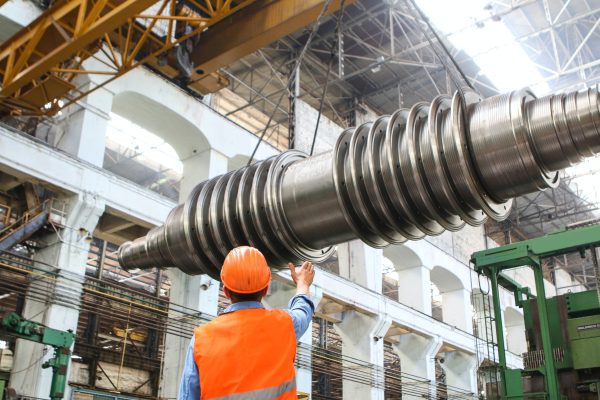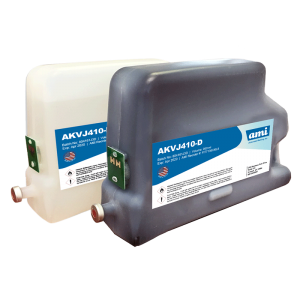
How to Reduce Costs in Manufacturing
 For manufacturers, the biggest impact on profit margins is frequently variable costs. Where fixed costs, like facility rental, insurance payments, or annual salaries, remain consistent regardless of fluctuations in production volume, variable costs can vary dramatically.
For manufacturers, the biggest impact on profit margins is frequently variable costs. Where fixed costs, like facility rental, insurance payments, or annual salaries, remain consistent regardless of fluctuations in production volume, variable costs can vary dramatically.
It’s a concerning factor for manufacturers experiencing a sudden expansion in sales or have a need to get lean. As a rule of thumb, increasing production output also increases variable costs such as raw materials or direct labor. After all, without the raw materials, labor, or the cost of running a manufacturing facility, there is no end product.
In this article, we’ll explore what a variable cost is and how a few simple techniques and practices in industrial printing and labeling can see a sizable chunk sliced off your variable costs – meaning more profits from more sales.
Let’s get started.
What is a variable cost?
A variable cost is an expense that changes relative to how much a company produces or sells – in this case, manufacturers. Variable costs are directly coupled to the manufacturing process, increasing or decreasing depending on a company’s production output.
For example, raw materials are the most common type of variable cost, as their volume needed is proportional to the number of units produced.
In contrast, direct costs never change – regardless of the production output. Therefore, as production increases, direct costs shrink relative to your overall turnover.
Other examples of variable costs include:
- Packaging materials
- Printing and labeling equipment and consumables
- Piece-rate labor
- Freight and shipping
- Billable wages
- Transaction fees
- Production supplies
- Sales commissions
- Utility costs
How to calculate variable costs
Assuming the price of materials and other variable costs is fixed (which they’re not), variable costs should be constant for each unit.
For example, if a bakery spent $5 on raw materials, like sugar, eggs, and flour, and $10 for piece-rate labor, the variable cost per cake is $15.
To calculate the total variable cost:
Total variable cost = Total number of units x Variable cost per unit
In our example, if the bakery were contracted to produce 10 cakes, then the variable cost would rise to $150. But, if the bakery closed for a week, baking no cakes, the variable costs would drop to $0. On the other hand, renting the bakery (say, for $50 per day) would not be affected by temporarily closing the business.
Gross profits are, therefore, the retail price of a unit minus the variable costs. We subtract the fixed costs from the gross profits to calculate the net profit.
Businesses can, therefore, only incur a loss when fixed costs are greater than gross profits. However, because fixed costs are difficult to reduce, a business’s profit rate is largely determined by the variable costs.
How to reduce variable costs in manufacturing
All businesses want to maximize profits. With a few simple steps, reducing variable costs can increase your gross profit substantially. Here’s how.
1. Reduce manual labor and mistakes
 Manual labor is often a significant proportion of your variable costs. Usually paid by the hour, an increase in production results in a similar increase in direct labor costs compared to salaried employees. More manual work also means more mistakes, which costs.
Manual labor is often a significant proportion of your variable costs. Usually paid by the hour, an increase in production results in a similar increase in direct labor costs compared to salaried employees. More manual work also means more mistakes, which costs.
There’s an obvious solution: automate.
Advances in automation are fundamentally changing the nature of manufacturing. Print-and-apply labeling systems or inline inkjet printers can reduce your reliance on direct labor. Workers no longer need to apply labels or hand stamp codes, increasing the speed and efficiency of production.
2. Streamline packaging costs
Manufacturers tend to focus on the product at the expense of the cardboard and plastic it’s wrapped in. Packaging adds costs in both extra weight and additional materials. Nor are these costs trivial.

Ikea, for example, saved $1.4 million annually by redesigning the packaging of a sofa – and the more sofas they sold, the more they saved.
In terms of printing, manufacturers must add supply chain and government markings like barcodes, serial numbers, batch codes, expiration dates, and more. Through aftermarket ink suppliers, businesses can reduce their ink costs while delivering high-quality results – in some cases by as much as half.
3. Shop around for materials
Whatever you are manufacturing, raw materials are needed. Instant coffee needs coffee beans; security cards need UV ink for codes. Cutting costs on the materials results in a direct increase in gross profits.
You may be missing out on potential savings by staying with an OEM. Finding a supplier who’ll reduce the cost of any component or materials will significantly increase profits.
4. Optimize workflows
Inefficient workflows decrease the number of units you produce per unit of time. The more time wasted means the less value added. Common inefficiencies include:
-
- Unnecessary movement of materials
- Excessive set-up times
- Over-segmented procedures
Even worse, a single slow stage can function as a limiting factor. Like a chemical reaction, your manufacturing process is only as quick as its slowest step. By reorganizing the process, you can reduce hassle and speed up the manufacturing process.
Consider where materials are stored – is everything labeled correctly and clearly? Does it stay organized? How long do employees search for materials? Such small losses of time add up, unit by unit.
You may also want to upgrade equipment to reduce the production time, increasing overall efficiency. For example, a higher caliber printer could print more products at a high quality and in a shorter time than your current machinery. Calculate if this investment is worth the cost-saving.
Variable costs are the key to higher profits
Manufacturers that ignore variable costs are wasting potential profits. While a reduction in fixed costs leads to a fixed increase in profits, a drop in variable costs increases the profit margin of every single unit produced.
With variable costs easier to cut, it is critical to evaluate your manufacturing process to identify where costs can be reduced. Do you want to talk to someone about reducing your variable costs with printing and labeling? Contact us to speak to an expert today!

